Have a look at this.
Monday, February 28, 2011
Sunday, February 27, 2011
The Gospel Coalition: 'They Testify About Me' Conference and Resources
 The Gospel Coalition is an international network of rock-solid Christ-centred churches and organisations. For those of you who got in touch following a few recent blog posts here about how Jesus can be found throughout the Bible, and not just the Gospels or New Testament, this three day conference, entitled 'They Testify About Me: Preaching Jesus and the Gospel from the Old Testament' will be of interest. With 70 speakers, including Mark Driscoll, Tim Keller, John Piper, Mark Dever, Alistair Begg, our own Keith & Kristyn Getty, Craig Dyer, Darrin Patrick (who I've blogged about before with this hard-hitting video which shook a few of you who emailed me about it), and Russell Moore - it's an astonishing line-up of probably the best Gospel presenters in the world today.
The Gospel Coalition is an international network of rock-solid Christ-centred churches and organisations. For those of you who got in touch following a few recent blog posts here about how Jesus can be found throughout the Bible, and not just the Gospels or New Testament, this three day conference, entitled 'They Testify About Me: Preaching Jesus and the Gospel from the Old Testament' will be of interest. With 70 speakers, including Mark Driscoll, Tim Keller, John Piper, Mark Dever, Alistair Begg, our own Keith & Kristyn Getty, Craig Dyer, Darrin Patrick (who I've blogged about before with this hard-hitting video which shook a few of you who emailed me about it), and Russell Moore - it's an astonishing line-up of probably the best Gospel presenters in the world today.
It's just a shame that it's in Chicago! For those of us who can't go, this list of resources (workshops, books, videos, articles and sermons) looks like a brilliant introduction to the subject. Craig Dyer is one of the speakers at this year's Keswick at Portstewart convention in July, so maybe he'll be touching on some of the same themes when he's over here.
There are quite a few UK churches in the Gospel Coalition (directory here), including Ballykeel Presbyterian in Ballymena and Greenwell Street Presbyterian in Newtownards - Graeme and I have played/sung in both (to the best of our limited abilities). Regular readers will know that Greenwell Street is close to the site of the original 1620s Montgomery school in Newtownards where John McLelland was the principal, and occasional lay preacher. Famous people still attend Greenwell St today!
> Follow The Gospel Coalition blog here
> Follow The Gospel Coalition on Facebook here
Saturday, February 26, 2011
Ulster-Scots Broadcast Fund
 Last Autumn, I was invited to take part in an event at BBC Northern Ireland, as a discussion session about Ulster-Scots and broadcasting. The audience was made up of the local independent television production sector (I blogged about the event here.) The Fund itself comes from the Department of Culture, Media and Sport in London, is set at £1m per annum for five years, and will be administered through Northern Ireland Screen. Just before Christmas N.I. Screen invited me to join the Committee, for an initial 2 years, which will oversee the Fund and the programmes which it decides to support.
Last Autumn, I was invited to take part in an event at BBC Northern Ireland, as a discussion session about Ulster-Scots and broadcasting. The audience was made up of the local independent television production sector (I blogged about the event here.) The Fund itself comes from the Department of Culture, Media and Sport in London, is set at £1m per annum for five years, and will be administered through Northern Ireland Screen. Just before Christmas N.I. Screen invited me to join the Committee, for an initial 2 years, which will oversee the Fund and the programmes which it decides to support.
I've accepted this role (unpaid!) and am very much looking forward to seeing the proposals which are brought forward, and to working with such a professional, experienced organisation as N.I. Screen. As such, I have declined a number of approaches from tv companies to assist with their programme proposals. Submissions are to be made by 4th March.
• NI Screen information about this first call for proposals is available here.
• BBC Northern Ireland has published guidance for independent producers which is available here.
Evangelical Millennialism in the Trans-Atlantic World, 1500-2000
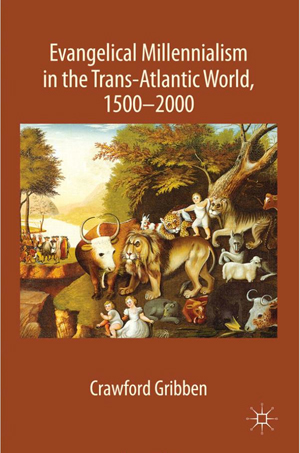
Crawford Gribben's latest book carries on the theme he first outlined in this book which I blogged about before. His new one is entitled Evangelical Millennialism in the Trans-Atlantic World, 1500-2000 (available here on Amazon). The promotional leaflet says this:
This book offers the first complete overview of the intellectual history of one of the most significant contemporary cultural trends. In the early seventeenth century, European evangelicals recovered those expectations of an earthly golden age that had been deemed heretical by medieval and reformation theologians. Throughout early modernity, and across the spectrum of evangelical belief, these millennial expectations were deployed to mount a series of radical critiques of church and wider culture. In modernity, these expectations were appropriated by religious and cultural conservatives, who found in millennial theology the framework of their hostility to an unbelieving world and a rationale for their critical engagement with it – a critical engagement that ranged from an attempt at the wholesale reconstruction of a Christian society to an expectation of its imminent and catastrophic demise. This account guides readers into the origins, evolution, and revolutionary potential of evangelical millennialism in the trans-Atlantic world.
It's a contentious, yet deeply influential subject. Particular denominations embrace it, others reject it. Some individuals spend more time trying to work out which emerging world leader might be Antichrist rather than getting to grips with Christ! Some prefer to speculate about the future rather than to understand, and apply, the lessons of the past.
Talking to a Presbyterian friend the other day, he said that his church was about to begin a study on Daniel. Unable to resist a bit of theological banter, I said "Great - will you be getting stuck in to the 70 weeks?", to which he laughed out loud and said, "No, we'll be sticking to the bits that are true, none of that other nonsense!". Philip Thompson tweeted a quote from Alastair Begg last week: "chronology - theology = mythology" !. There's so much divergence within the Protestant denominations that sometimes I wonder if the all-embracing term is even useful any more. But the big charts and diagrams are visually brilliant - I remember seeing a hand-painted one in a mission hall about 30 years ago that was so big it filled the entire back wall and stretched round the corner onto one of the side walls too. A detail of a printed one of mine is below. Click to enlarge.
Thursday, February 24, 2011
Bloggin Ministers
Not, not Mr McCausland (even though his blogging is impressive - which was nominated for an award recently), but ministers of the church kind. Here are a few that I dip into from time to time and can thoroughly recommend:
Martin McNeely (Presbyterian, Ballykeel in Ballymena): MartinMcNeely.com
Scott Woodburn (Presbyterian, Ballygowan): Empire of Dirt
Philip Thompson (Presbyterian, Rathfriland): PhillyThomp - although Twitter is really his thing)
Alan Wilson (Baptist, Portstewart): Coastal Pastor
Philip Dunwoody (Enniskillen, Reformed Presbyterian): MI7:7
Robert Robb (Enniskillen, Reformed Presbyterian): Pastor Robb's Blog
Robin Fairbairn (Presbyterian, Communications Officer) takes care of MissionIreland
I also enjoy:
TheResurgence.com - part of the MarsHillChurch phenomenon
MarsHillChurch.org - I listen to something on this site every day that I'm deskbound
There are probably a lot more that I'm not aware of. Luther, Wycliffe, Calvin, Tyndale and Knox all benefitted from the new communication technology of their time, which was of course the printing press. It's good to see that attitude still at work five centuries on.
God's Secretaries by Adam Nicolson
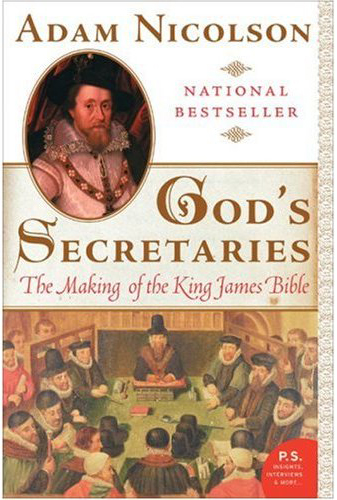
This year is the 400th Anniversary of the publication of the King James Bible. The book shown here, by Adam Nicolson, has been recommended to me by a friend who works in the broadcasting industry here in Northern Ireland. I haven't bought it yet, but I have listened to his other recommendation - a podcast of Nicolson giving an amusing, engaging and informative talk on the subject, which is available FREE here on iTunes.
Here's a short interview that Nicolson gave to PBS about the book.
Wednesday, February 23, 2011
Yrland Schotlandt map, cropped, 1658
Plooterin aboot
Blogging is a funny thing. I've had enquiries this week already from a man in Australia trying to locate old recordings, a man from Scotland trying to find an old poem, two people looking for family tree information, and an enquiry to give a presentation in the Autumn about new media as a communications tool. They're the nice ones, which show that the casual 'plooterin aboot' that this blog is can actually have some positive benefit.
Then are the strange oddballs who monitor every word, who poke around here and on various associated blogs, and who then concoct dark shadowy theories about some mysterious hidden agenda. I know of a handful of such people who hoke around here, and there are probably more. A normal body would make direct contact and get to know you over a pot o' tay, but then again these maybe aren't normal folk.
So, whoever's out there, if you want to get in touch please do. I'm out and about most weeks, so I can meet up any time. And when I'm at home the kettle is usually on and the door is usually open. But then again if you'd prefer to make things up, then fire away. It'll be more interesting than the mundane reality anyway.
Monday, February 21, 2011
Ole Smoky Tennessee Moonshine
The best packaging design I've seen in years; with thanks to Glen.
"...Our Scots-Irish ancestors brought their knowledge and skills of whiskey-making with them as they came to Appalachia. Conditions in the area were good for growing corn, but it didn’t take long to realize a lot more money could be made off of a gallon of corn liquor than a bushel. Once the law began cracking down on the industry, the nature of our people and the rugged mountain terrain made way for the hay day of bootlegging..."
Visit the magnificently-designed website.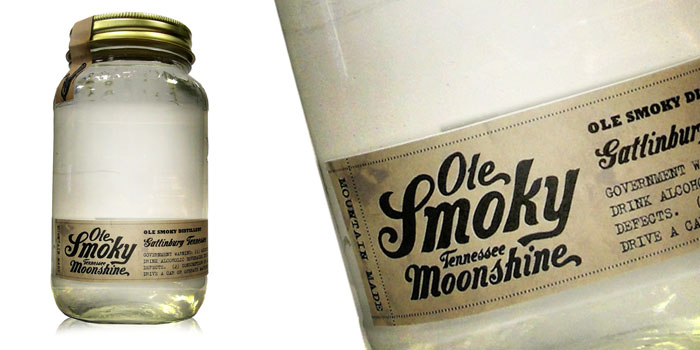
Sunday, February 20, 2011
"...We practice selective annihilation, of mayors and government officials for example, to create a vacuum. Then we fill that vacuum..."
The title above is a line from the Guns N Roses song Civil War, which was released in 1990 on a Romanian orphan charity fundraising album called "Nobody's Child". They were the biggest rock group in the world at the time; the line was borrowed from a speech made by a South American dictator. Up until this point, the majority of Guns N Roses' songs had been about their hedonistic lifestyle, so to suddenly hear them tap into current affairs and politics was a bit of a shock. I was just 18, but having grown up during 'The Troubles' I had a fair idea that the neatly-packaged evening news broadcasts didn't always tell the full story - whether about events here in Northern Ireland or on the other side of the world.
As ripples of revolution rock the Middle East, firstly in Egypt, now in Libya and Bahrain, there has been some scepticism about the risings, and whether they were spontaneous at all - or whether they might have been carefully co-ordinated with Western assistance. Or maybe that the West has spent years propping up the very régimes which, in the face of sudden, high profile public protests, they now so quickly disapprove of.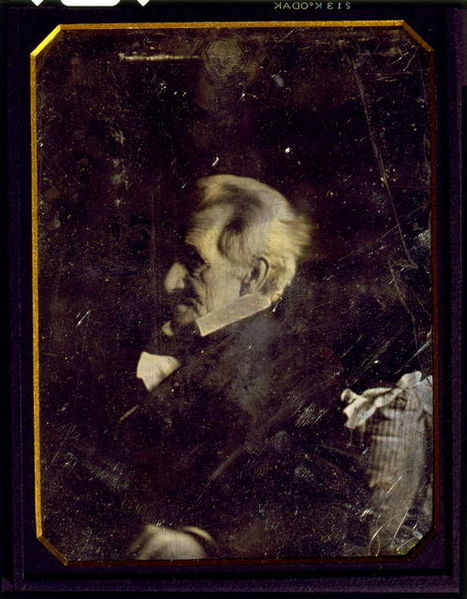 In May 1842, the 75-year-old former President Andrew Jackson (1767-1845; pictured left in a photo taken in 1844) whose parents had emigrated from Carrickfergus in 1765, was being lobbied by an Irish-American organisation called the Irish Repeal Association of New York. They were seeking his support for their political objectives back in the "old country".
In May 1842, the 75-year-old former President Andrew Jackson (1767-1845; pictured left in a photo taken in 1844) whose parents had emigrated from Carrickfergus in 1765, was being lobbied by an Irish-American organisation called the Irish Repeal Association of New York. They were seeking his support for their political objectives back in the "old country".
In a letter of reply to the organisation, Jackson, whilst acknowledging 'the Irish blood which flows in my veins' *, skilfully avoided becoming drawn into overseas issues. He wrote of '... that maxim which teaches us not to interfere offensively with the internal affairs of other nations. The preservation of the principle on which this maxim rests is far more important to the good of mankind than any benefit which can possibly be obtained by a departure from it ...' Jackson went on to say that representative government in Ireland should be achieved 'without violence or civil commotion', based squarely upon 'the will of her people'.
Jackson died before the United States descended into its own civil war; April 2011 sees the 150th anniversary of the Civil War (aka the War Between the States or the War of Northern Aggression). The anniversary has been turned into a major tourism opportunity over the next few years.
We can speculate of what Jackson would have made of the American Civil War, or of present-day American and British foreign policy.
.....
* I would suggest that Jackson was speaking geographically rather than culturally.
Saturday, February 19, 2011
Ulsterisms, t-shirt style
These and more are available here. No offence to those in Co Tyrone, but the "Strabanistan" one is superb. 





Friday, February 18, 2011
Packaging attitude
(Lifted from Ultonia.) I didn't watch the Superbowl so I missed this ad. It's a great example of how a product (in this case a car) can be packaged and sold through a set of emotional values, a personality, rather than through its rational, functional characteristics.
Wednesday, February 16, 2011
Jesus in every book of the Bible
A few other folk have posted this onto their blogs, so here it is again. UK readers might squirm a wee bit at the style now and again, but the content is 100% bang on. When I was a small boy, an old man advised me that when reading the Bible, to "look for Christ on every page". When I became a parent I soon realised that, with the ocean of Bible story books that are out there, it's possible to drift into treating much of the Bible as little more than a collection of bedtime stories, with 4 books about Jesus in the middle. The Gospel isn't about believing in God, it's about trusting in Christ. This video is a good starter -
And this is how Jesus presented the (Old Testament part of the) Bible himself: "...And beginning with Moses and all the Prophets, He explained to them what was said in all the Scriptures concerning Himself..." Luke 24v27
Tuesday, February 15, 2011
Belfast in 1690
This illustration is from an old, old book: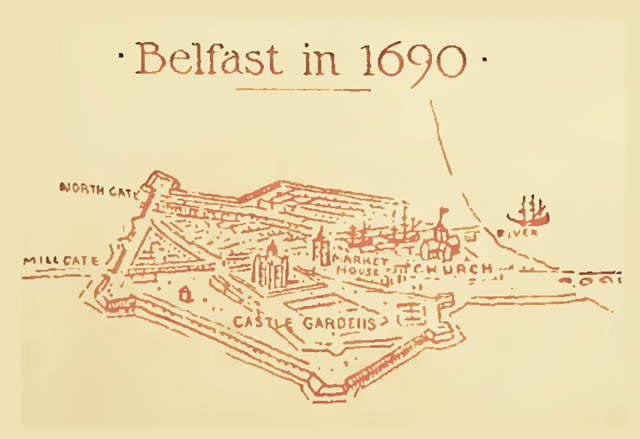
UPDATE: The pics below, of King William Park in Belfast (near the Moravian Church at the end of the Lisburn Road) are posted as a follow-up to the comments from "Napalm". I worked close by for about 10 years. Click to enlarge.
A riveting account of William of Orange's "Glorious Revolution" can be found in US political journalist/commentator Michael Barone's book "Our First Revolution: The Remarkable British Upheaval That Inspired America's Founding Fathers"- available here on Amazon. Irish history often reads better in the hands of someone who's not stuck in the usual Hibernocentric mindset.
Sunday, February 13, 2011
Old-time Ulster music: The Harmony Trio, Newtownards, 1930s
When you hear or read of the old-time stringed music of the early 20th Century, it is of course the American artists that spring to mind. They were recorded and popularised on 78s and in the early days of radio - the record companies became professionalised and their musicians quickly became "golden geese" who were marketed, photographed and written about with care - selling millions of records and becoming multi-million dollar moneyspinners.
Over here on our side of the Atlantic there were many, but sadly now forgotten, musical groups. One of these was The Harmony Trio, who were three men from Newtownards and Belfast:
• Sandy McDonald (hammer dulcimer)
• Willie Gamble (1897-1985; hammer dulcimer and mandolin)
• Jack Noble (accordion)
In 1932 and 1933 they played on BBC Radio on a late night slot between 9pm - 10pm. Willie Gamble also made two dulcimers; during WW2 the Gambles were evacuated from Belfast to Newtownards, but upon their return to Belfast the dulcimers had become the home for an infestation of woodworm, and so were thrown out. However, the hammers have survived and are still with the family. The BBC Archive at the Ulster Folk and Transport Museum doesn't hold any recordings of The Harmony Trio, so apart from photographs, clippings and memories that the families still have, nothing remains.
(Thanks to the family for the information above which they gave me many years ago. Previous blog post about the famous Co Antrim dulcimer player John Rea, 1915-1983, available here)
Saturday, February 12, 2011
One Hundred Scotch Hymns and Poems (Chiefly in the Scotch Dialect), Edinburgh 1881
This book is the latest addition to my wee library, instantly doubling my "Sacred Scotch Solos" collection. Click the pics to enlarge:
Friday, February 11, 2011
Retro cool from Scotland
Most Ulster-branded "stuff" is rubbish. A lot of Scottish-branded stuff is rubbish too. This is how to do it right in 2011.


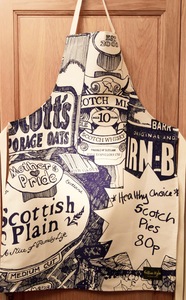

Thursday, February 10, 2011
The Livingstones who made it to America
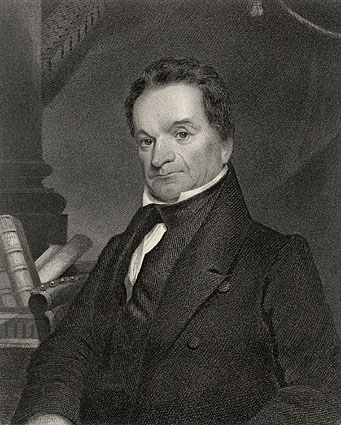
The portrait shown here is of Edward Livingstone. His great-grandfather was Rev John Livingstone, who had been one of the four Presbyterian ministers to commission the ill-fated emigrant ship Eagle Wing, which famously failed in its attempt to carry 140 Ulster-Scots emigrants to a new life in the New World in September 1636.
Even though John didn't make it, his son Robert Livingstone did, and subsequent generations of the Livingstone family made a massive impact in America. Two examples are:
• John's grandson, Philip Livingstone (1716-1778) signed the American Declaration of Independence. He was Presbyterian and you can bet that the Covenants coursed through his veins - his grandfather had carried a copy of Scotland's National Covenant (1638), non-stop on horseback, from Greyfriars in Edinburgh to London for like-minded Scots to sign it.
• John's great-grandson, Edward Livingstone (1764-1836), shown here, was Andrew Jackson's Secretary of State. Jackson's parents had left Boneybefore, Carrickfergus in 1765. Edward Livingstone was a close friend and ally of Jackson's for over 30 years.
I wonder, through those 30 years of friendship, if Jackson ever gave Livingstone any stick for his great-grandfather failing in the voyage, from Belfast Lough to America, that Jackson's parents later succeeded in?
And then there's the story that Jackson might actually have been born in Carrickfergus just before his parents set sail...
Wednesday, February 09, 2011
"Take pride in rural Ulster"

Pictured left: Harnen Stand, Ulster Folk & Transport Museum.
"...If rural England, rural Wales and rural Scotland find it very much worth while to devote so much attention to the development of rural craft industries surely it can be argued that a predominantly rural community such as ours would find a similar interest even more profitable? We are convinced that this is a field in which immeasurably valuable work is waiting to be done. What is wanted, apart from some degree of practical assistance from Government, is goodwill and enthusiasm from all who take pride in rural Ulster and its way of life and its wonderful traditions..."
Q: When do you think the above excerpt was written?
a) 1952 in a publicity brochure by a big commercial animal feeds firm
b) 1998 painting a rosy glow after the Belfast Agreement
c) 2002 as part of the DCAL / Ulster-Scots "Futuresearch" process
d) 2010 in a government report on diversification, ecology and the "green economy"
Answer to follow...
UPDATE - the answer is of course (a). The excerpt is from "Ulster's Rural Crafts" published by E.T. Green Farm Stock Foods for the Balmoral Show in 1952. I wonder what the author thought during the following decades as they watched cottages being bulldozed, stone gate pillars being replaced by concrete posts, five bar gates replaced by galvanised versions, all accelerated by government policies and the small print clauses of grant schemes?.
Tuesday, February 08, 2011
Born Fighting - episode 2
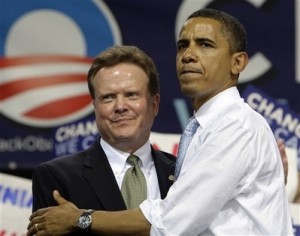 "Born Fighting" on UTV was superb tonight. Senator James Webb (shown here with some other man who I think I've seen before somewhere) is a marvellous ambassador for our story. Despite the many critics, cynics, apathetics and outright opponents who have done their best to silence it, Ulster-Scots awareness is steadily moving back to where it should be - right in the mainstream of life in Northern Ireland, and perhaps as the most dominant and dynamic element within our cultural life.
"Born Fighting" on UTV was superb tonight. Senator James Webb (shown here with some other man who I think I've seen before somewhere) is a marvellous ambassador for our story. Despite the many critics, cynics, apathetics and outright opponents who have done their best to silence it, Ulster-Scots awareness is steadily moving back to where it should be - right in the mainstream of life in Northern Ireland, and perhaps as the most dominant and dynamic element within our cultural life.
Sunday, February 06, 2011
James Webb hits the nail on the head in News Letter article (Saturday 5 Feb 2011)

"...in Ireland, because of the recent troubles, things just seemed to boil down to between Catholic and Protestant, rather than really examining the cultural differences, so it just sort of got lost..."
The 2-D Irish v British political glasses that most people still wear don't provide the true 3-D English+Irish+Scottish cultural view.
Saturday, February 05, 2011
David Johnstone Beattie (1881 - 1964); author, hymnwriter and (Plymouth) Brethren historian from Langholm and Carlisle
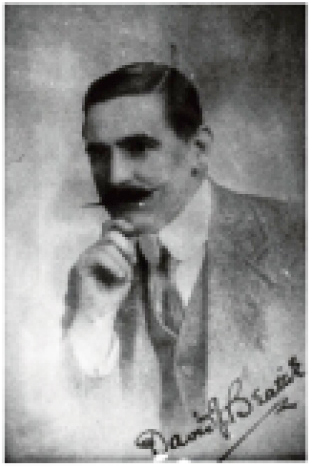
The beautiful town of Langholm in the Reiver country of the Scottish Borders is nicknamed 'The Muckle Toun' and is perhaps best known as the birthplace of poet and Scots language activist Hugh MacDiarmid (real name Christopher Murray Grieve). The last time I drove through there were some large entrance signs commemorating this connection. Langholm is also the southernmost point of one of the most beautiful driving routes in the British Isles - the A7 through the Borders to Edinburgh, which has some stretches which are just as spectacular as the famous Skyline Drive in Virginia.
A lesser-known Langholm man, David J Beattie, first came to my attention when I was sent photocopies of a small gospel song book entitled "Songs of the King's Highway", a collection of 77 songs he had written which was published by Pickering and Inglis. It was undated but from the typographic style it looked to be from around the late 1920s or early 1930s - the same era when Pickering & Inglis first published the mighty hymnbook Redemption Songs, and also Duncan McNeill's Hymn Book. Seven of the pieces in Beattie's book were in light Scots rather than standard English, and I have posted them over at Sacred Scotch Solos.
I picked up an original copy of the book a few years ago, and to my surprise inside was a pencil inscription "Author's copy, Beattie lived in Carlisle", along with Beattie's signature. In the introduction Beattie describes the American hymnwriter Charles H Gabriel as his 'intimate friend', to whom Beattie 'owed much for help and encouragement during many years of close friendship'. Gabriel wrote three melodies for the book.
There's an article here entitled 'Langholm's Forgotten Son' which summarises Beattie's life. He and his brother joined the family stonemason/monumental sculptors business in 1898; during and after the two World Wars the firm was responsible for many war memorials in the south of Scotland.
He belonged to the (Plymouth) Brethren and wrote occasionally for the Brethren publication The Believer's Magazine, including articles about Scotland's 1859 Revival. Even though Brethren assemblies/halls had begun in Plymouth and Dublin among (affluent) disaffected Anglicans in the early 1800s, it was post-1859 Revival working-class Scotland and Ulster that was a seedbed in which they really flourished. Beattie's historical account of the growth of the Brethren movement, entitled Brethren - The Story of a Great Recovery (published by Brethren publisher John Ritchie of Kilmarnock in 1939, who also printed some of my grandfather's poetry, is freely available online here), carefully details the intimate connections between the halls of Scotland and Ulster. It tells the stories of men like Jeremiah Meneely, so closely associated with the initial Kells and Connor epicentre of the Ulster 1859 revival and who later led evangelical missions in Ayrshire and Glasgow, where his Antrim voice must have preached the hamely message of his own self-penned hymn "There's a gran' time comin, o brither dear, whun Jesus will tak us hame'.
In between times Beattie wrote six other books which spanned his interests of local history, language, music, the stories of hymnwriters, as well as the history of the "wee halls" - Oor Gate En' (1915), Psalm Singing Among the Scottish Covenanters: A Lecture (pamphlet, 9 pages, Steel Bros. Carlisle 1915), Prince Charlie and the Borderland (1928), Oor Ain Folk (1933), Stories and Sketches of our Hymns and Their Writers (1934; the frontispiece photo of which is Ayrshire hymnwriter Anne Ross Cousin), The Romance of Sacred Song (1935; in the Preface of which he wrote that 'my bookshelves already groaned under the weight of volumes on this engrossing subject') and Lang Syne in Eskdale (1950).
For those of you with an interest in gospel music, his chapter How We Got our Popular Gospel Song is a fascinating read - available here. In it Beattie rhymes off a "Premier League" list of hymnwriters of his time:
"...Among writers who laid the foundation of American Gospel hymnody the following names are familiar: W. B. Bradbury, P. P. Bliss, Philip Phillips, Ira D. Sankey, James McGranahan, W. J. Kirkpatrick, Robert Lowry, George C. Stebbins, H. R. Palmer, D. W. Whittle, T. C. O’Kane, J. R. Sweney, W. H. Doane, Fanny Crosby, E. O. Excell and Charles H. Gabriel. Of this group of sweet singers, whose songs have been carried to the ends of the earth, Mr. Stebbins and Mr. Gabriel alone remain...." - it's significant that of the 16 he listed, a quarter of them (the ones I've marked in bold) all had Ulster connections.
Beattie also contributed a hymn to The Believer's Hymnbook - 'Assembled, Lord, at Thy Behest' (no 367), a book which is still used in the simple Sunday morning 'Breaking of Bread' meetings in Brethren-minded gatherings around the world; Beattie is named in the acknowledgements section at the front of the book.
Beattie died in July 1964 and his funeral service was held in Hebron Hall in Botchergate, Carlisle. The stonemasonry business still operates from the same building, now under different management, but is still called Beattie & Co, shown below.
If you know more about him which could be added to this post, please get in touch.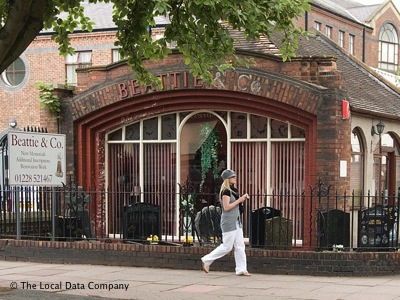
Thursday, February 03, 2011
Sketches of North Carolina by WH Foote (1846)

It's important that we recover almost-lost history, and that the achievements of significant people from years ago are made known once more. Previous generations knew, wrote, and told our story - we need to do the same today to ensure that the scandalous cultural loss of the past is not repeated in the future. Rev William Henry Foote (1794 - 1869) is a man who could perhaps be described as the James Webb of his generation.
EARLY LIFE
He was born in Colchester, Connecticut in 1794. He was of English descent and could trace his roots back to Nathaniel Foote and Elizabeth Deming who arrived in America in 1633. Foote's father, Stephen Foote (1758 - 1843) had been a soldier during the American Revolution of 1776.
WH Foote graduated from Yale University as a Presbyterian minister in 1819 and was installed at a church in Shenandoah County, Virginia. He spent many years on mission outreach in North Carolina, during which time he collected much local history.
MARRIAGE AND ULSTER-SCOTS IN-LAWS
In 1822 Foote married Eliza Wilson Glass (1800 - 1835) from the adjacent Frederick County. She was a minister's daughter of Ulster-Scots descent. Her parents were Rev Joseph Glass (1773 - 1821) and Ann McCallister (1780 - 1831). Rev Glass's father, who was also called Joseph, and his grandparents Samuel Glass and Mary Gamble, had left Banbridge in 1735. They sailed across the Atlantic, eventually settling in Opequon, Virginia in 1736. Their gravestone records their exodus:
To the memory of / Samuel Glass / and his wife / Mary Gamble
Emigrants from Banbridge / County Down, Ireland / A.D. 1735
and / Their Children / John / Eliza / Sarah / David / Robert / Joseph
Were all born in Ireland / And came with them.
In 1824 W H Foote and his wife settled in the old town of Romney in what is today West Virginia. He became minister of Romney Presbyterian Church. However, Eliza died in April 1835 and was buried in the Glass family plot in Opequon Cemetery. Her gravestone records her last words: "Tell them I am not afraid to die, it is easy to die, for a christian to die." There are other Ulster emigrants buried there, such as a James Hamilton whose gravestone states that he was originally from Tyrone. In 1838 Foote married again, this time to Arabella Gilliam of Petersburg, Virginia.
'SKETCHES OF NORTH CAROLINA' (1846)
His writings are full of admiration for the Ulster-Scots who came to America and who made up the Scotch-Irish communities and congregations with whom he shared spiritual conviction and cultural values, and among whom he spent his life. The notes he collected in North Carolina formed the core of his 600 page epic Sketches of North Carolina, Historical and Biographical, Illustrative of the Principles of a Portion of Her Early Settlers which was published in 1846. It's freely available online. The first four chapters are about American history, but chapters 5 - 9 are a detailed retelling of Ulster-Scots history and seem to be largely based on James Seaton Reid's account. Chapter 5 is entitled "Origin of the Scotch-Irish": –
"...Ulster began to send out swarms to America; shipload after shipload of men trained to labor and habits of independence, sought the American shores; year after year the tide rolled on without once ebbing; and many thousands of these descendants of the emigrants from Scotland, disdaining to be called Irish, filled the upper country of Pennsylvania, Virginia and the Carolinas. Ulster, in Ireland, has been an exhaustless hive, a perennial spring..."
There are also some chapters on Scottish history, but most of the rest of the book is made up of detailed accounts of the activities of the Presbyterian Church in different regions across North Carolina.
'SKETCHES OF VIRGINIA' (1850)
Four years later his second epic, the 616 page Sketches of Virginia, Historical and Biographical was published, containing an entire chapter entitled Siege of Londonderry. It includes a story of Mary Gamble Glass, named on the gravestone above, who 'used to speak with tears of that memorable siege, and lament in bitterness "two fair brothers" whose death filled up in part the measure of sufferings at Derry... the names of the "Apprentices" are familiar names in the Valley of the Shenandoah.'
CIVIL WAR
When war broke out in 1861, Foote covered vacant pulpits in south Virginia, worked as a chaplain within the Confederate Army.
DEATH, BURIAL AND 'THE HUGUENOTS' (1870)
Foote was buried in November 1869 at Indian Mound Cemetery in Romney, West Virginia.His 630 page volume entitled The Huguenots, or Reformed French Church was published posthumously in 1870.
If any readers have portraits of him, or photos of his grave, I would appreciate it if you could get in touch with me.
READ HIS BOOKS
- Sketches of North Carolina on GoogleBooks
- Sketches of Virginia on GoogleBooks
- The Huguenots on GoogleBooks
FURTHER READING:
- short biography in "Yale's Confederates"
- short biography from the Presbyterian Heritage Center, Montreat, North Carolina
- Glass gravestone inscriptions in Opequon Cemetery
Tuesday, February 01, 2011
Born Fighting - programme one - a short review.
Well? I'd be interested in your views. For what it's worth:
Positives:
- I thought James Webb presented it very well.
- I thought the broad narrative was fine, connecting some of the projects I've worked on - the Bruce period, through to the early Hamilton & Montgomery settlements, the Plantation and the Covenanters
Negatives:
- great shame that it skipped from 1641 to 1688. There are hugely important Ulster-Scots events in this period which were ignored.
- I was disappointed at some of the comments by the Scottish academics. Qualifications and understanding are not the same thing. I've Sky-plussed it so will watch again when I get the chance.
- it probably over-emphasised the periods of war and bloodshed at the expense of other themes, as well as peddle the old stereotypes about stealing land from the Irish. In the late 1500s Antrim and Down had been "wasted" and largely depopulated, and the Scots who settled here did so as a result of business transaction or invitation. And the story in the rest of Ulster was far more complex than "landgrabbing".
Let's see what programme two brings.
UPDATE: watch the first programme online here.
Josh Wilson - It is Well with my Soul
The first half of this is great, and then it all gets a bit Snow Patrol-y before going back to normal. Superb.











